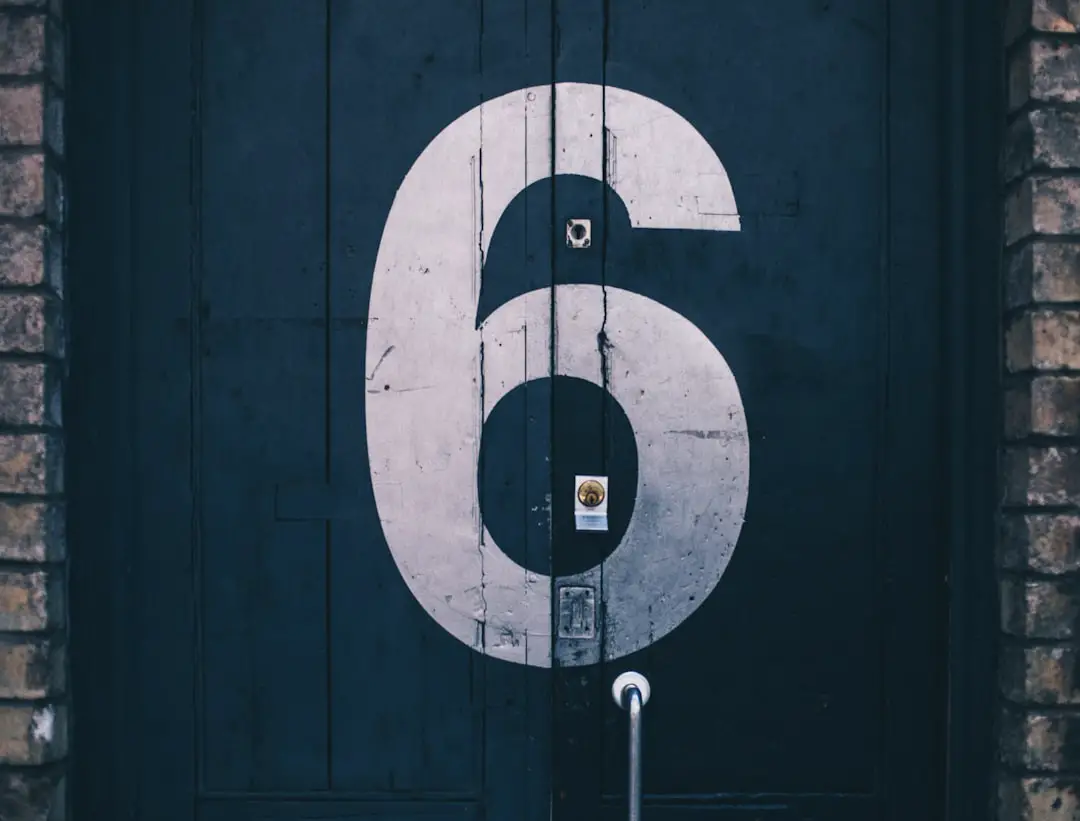Support our educational content for free when you purchase through links on our site. Learn more
Spanish Numbers: Master Counting From 1-100 [2024] 🔢

Did you know that numbers are essential for daily tasks and communication in Spanish-speaking countries? Whether you’re planning a trip to Spain or Latin America, learning Spanish numbers is a must! In this comprehensive guide, we’ll take you on a journey to master counting from 1 to 100 in Spanish. Get ready to impress your friends and navigate Spanish-speaking countries with confidence!
Quick Answer
In Spanish, numbers are pronounced differently in Spain and Latin America. Here’s a quick overview of Spanish numbers from 1 to 10:
✅ 0: cero (sey-roh)
✅ 1: uno (oo-no)
✅ 2: dos (dohs)
✅ 3: tres (trehs)
✅ 4: cuatro (koo-ah-troh)
✅ 5: cinco (seen-coh)
✅ 6: seis (say-es)
✅ 7: siete (see-eh-teh)
✅ 8: ocho (oh-choh)
✅ 9: nueve (noo-eh-veh)
✅ 10: diez (dee-ehs)
Now, let’s dive deeper into the world of Spanish numbers and explore how to count from 1 to 100 like a pro!
Quick Tips and Facts
Before we delve into the details, here are some quick tips and interesting facts about Spanish numbers:
✅ In Spanish, numbers are written differently than in English. For example, instead of writing “21,” you would write “veintiuno” (twenty-one).
✅ Spanish numbers have gender. When counting objects, you need to use the masculine or feminine form of the number. For example, “dos libros” (two books) and “dos mesas” (two tables).
✅ The numbers 16 to 19 have unique names in Spanish. For example, 16 is “dieciséis” (dee-eh-see-says) and 17 is “diecisiete” (dee-eh-see-eh-teh).
✅ Spanish numbers are used in a variety of contexts, from telling time to giving phone numbers. Mastering them will greatly enhance your Spanish language skills!
Now that you have a taste of what’s to come, let’s explore the background and history of Spanish numbers.
Background: The Fascinating World of Spanish Numbers

Numbers have been an integral part of human civilization for thousands of years. The concept of counting and numerical systems has evolved across different cultures and languages. Spanish numbers, with their unique pronunciation and structure, offer a fascinating glimpse into the linguistic diversity of the Spanish-speaking world.
Spanish Numbers 1-10: The Building Blocks
To truly master counting in Spanish, we need to start with the basics. Let’s take a closer look at the numbers from 1 to 10:
1. Uno (oo-no)
The number one is “uno” in Spanish. It’s a simple and straightforward word that you’ll use frequently in your Spanish conversations.
2. Dos (dohs)
Moving on to number two, we have “dos.” Remember to pronounce the “s” at the end of the word.
3. Tres (trehs)
Number three is “tres.” It’s a common number that you’ll encounter in various situations, from counting to telling time.
4. Cuatro (koo-ah-troh)
Next up is number four, which is “cuatro.” Pay attention to the pronunciation of the “u” and the rolling “r” sound.
5. Cinco (seen-coh)
Number five is “cinco.” It’s a straightforward word that’s easy to remember and pronounce.
6. Seis (say-es)
Moving on to number six, we have “seis.” It’s a short and sweet word that rolls off the tongue effortlessly.
7. Siete (see-eh-teh)
Number seven is “siete.” Remember to pronounce the “s” at the beginning of the word and the “e” as a short vowel sound.
8. Ocho (oh-choh)
Next, we have number eight, which is “ocho.” Pay attention to the pronunciation of the “ch” sound.
9. Nueve (noo-eh-veh)
Number nine is “nueve.” It’s a unique word that adds a touch of elegance to your Spanish vocabulary.
10. Diez (dee-ehs)
Finally, we have number ten, which is “diez.” It’s a crucial number to remember as it forms the basis for counting in Spanish.
Now that we’ve covered the building blocks, let’s move on to the next set of numbers.
Spanish Numbers 11-20: A Unique Twist
When it comes to numbers 11 to 20, Spanish introduces some unique twists. Let’s explore them:
11. Once (on-say)
Number eleven is “once.” It’s a straightforward word that combines the number “one” (uno) with the suffix “-ce” (-ce).
12. Doce (doh-say)
Moving on to number twelve, we have “doce.” It follows a similar pattern to number eleven, combining “two” (dos) with the suffix “-ce” (-ce).
13. Trece (trey-say)
Number thirteen is “trece.” It continues the pattern, combining “three” (tres) with the suffix “-ce” (-ce).
14. Catorce (kah-tor-say)
Next up is number fourteen, which is “catorce.” It combines “four” (cuatro) with the suffix “-ce” (-ce).
15. Quince (keen-say)
Number fifteen is “quince.” It’s a unique word that doesn’t follow the pattern of the previous numbers.
16-19. Dieciséis, Diecisiete, Dieciocho, Diecinueve (dee-eh-see-says, dee-eh-see-eh-teh, dee-eh-see-oh-choh, dee-eh-see-noo-eh-veh)
Numbers sixteen to nineteen have their own unique names in Spanish. Remember to pay attention to the pronunciation of these numbers.
20. Veinte (bey-en-teh)
Finally, we have number twenty, which is “veinte.” It’s a straightforward word that marks the end of the first set of numbers.
Congratulations! You’ve made it through the first set of numbers. Now, let’s move on to the next set.
Spanish Numbers 21-100: The Counting Continues
From numbers 21 to 100, Spanish follows a consistent pattern. Let’s explore how to count through this range:
21-29. Veintiuno, Veintidós, Veintitrés, Veinticuatro, Veinticinco, Veintiséis, Veintisiete, Veintiocho, Veintinueve (beyn-tee-oo-no, beyn-tee-dohs, beyn-tee-trehs, beyn-tee-koo-ah-troh, beyn-tee-seen-coh, beyn-tee-say-es, beyn-tee-see-eh-teh, beyn-tee-oh-choh, beyn-tee-noo-eh-veh)
Numbers from 21 to 29 follow a unique pattern in Spanish. They combine the word “veinte” (twenty) with the numbers one to nine.
30. Treinta (treyn-tah)
Moving on to number thirty, we have “treinta.” It’s a straightforward word that marks the beginning of a new set of numbers.
40. Cuarenta (kwah-ren-tah)
Number forty is “cuarenta.” Pay attention to the pronunciation of the “u” and the rolling “r” sound.
50. Cincuenta (seen-kwen-tah)
Next up is number fifty, which is “cincuenta.” It’s a straightforward word that’s easy to remember and pronounce.
60. Sesenta (seh-sen-tah)
Number sixty is “sesenta.” Remember to pronounce the “s” at the beginning of the word and the “e” as a short vowel sound.
70. Setenta (seh-ten-tah)
Moving on to number seventy, we have “setenta.” Pay attention to the pronunciation of the “s” at the beginning of the word.
80. Ochenta (oh-chen-tah)
Next, we have number eighty, which is “ochenta.” Pay attention to the pronunciation of the “ch” sound.
90. Noventa (noh-ven-tah)
Number ninety is “noventa.” It’s a unique word that adds a touch of elegance to your Spanish vocabulary.
100. Cien (syen)
Finally, we have number one hundred, which is “cien.” It’s a crucial number to remember as it marks the end of our counting journey.
Congratulations! You’ve successfully mastered counting from 1 to 100 in Spanish. Now, let’s address some frequently asked questions to further enhance your understanding.
FAQ

How do I pronounce Spanish numbers?
Spanish numbers have their own unique pronunciation. It’s important to pay attention to the sounds of each number. Practice pronouncing them correctly to improve your Spanish language skills.
Read more about “… 5 in Spanish: A Comprehensive Guide to Counting from 1 to 100”
Are Spanish numbers the same in all Spanish-speaking countries?
While the basic numbers are the same across Spanish-speaking countries, there may be slight variations in pronunciation and regional preferences. It’s always a good idea to familiarize yourself with the specific dialect of the country you’re visiting or interacting with.
Read more about “… Days of the Month in Spanish: A Comprehensive Guide”
How can I practice counting in Spanish?
The best way to practice counting in Spanish is through repetition and immersion. Try counting objects around you, practicing with a native speaker, or using language learning apps and resources. Consistency is key!
Read more about “… 8 in Spanish: The Ultimate Guide to Numbers in Spanish”
Are there any tricks to remember Spanish numbers?
To remember Spanish numbers more easily, try associating them with familiar objects or creating mnemonic devices. For example, you can associate the number “uno” with a single piece of fruit or “cinco” with the five fingers on your hand.
Can I use Spanish numbers to tell time?
Yes, Spanish numbers are used to tell time. It’s important to familiarize yourself with the specific vocabulary and phrases used when telling time in Spanish.
Now that we’ve answered some common questions, let’s wrap up our journey through Spanish numbers.
Read more about “… Learn Spanish Numbers: 31 in Spanish and Beyond”
Conclusion

Mastering Spanish numbers is an essential skill for anyone learning the language. From counting objects to telling time, numbers play a crucial role in daily communication. By following our comprehensive guide, you’ve gained the knowledge and confidence to count from 1 to 100 in Spanish like a pro!
Remember to practice regularly and immerse yourself in the Spanish language to further enhance your skills. Whether you’re planning a trip to a Spanish-speaking country or simply want to expand your language abilities, counting in Spanish is a valuable skill that will open doors to new opportunities.
So go ahead, start practicing, and embrace the world of Spanish numbers! ¡Buena suerte! (Good luck!)
Recommended Links
- Spanish Vocabulary: Expand your Spanish language skills with our comprehensive vocabulary resources.
- Spanish Conversation Practice: Improve your conversational skills with our interactive Spanish conversation practice exercises.
- Spanish Language Learning: Explore our wide range of articles and resources to enhance your Spanish language learning journey.
- Spanish Cultural Insights: Dive into the rich cultural aspects of the Spanish-speaking world and gain a deeper understanding of the language.
- Spanish Grammar Tips: Enhance your Spanish grammar skills with our helpful tips and explanations.
Looking for more language learning resources? Check out these recommended links:
- Busuu: Practice counting in Spanish with Busuu’s online course.
- Spanish Numbers: Practice Counting From 1-100: Learn more about Spanish numbers and expand your language skills.
Reference Links
For more information about Spanish numbers and related topics, please refer to the following links:
- Spanish Numbers: Practice Counting From 1-100
- Spanish Numbers
- Spanish Numbers: How to Count in Spanish
- Spanish Numbers: A Complete Guide
- Spanish Numbers: Learn How to Count in Spanish
Remember, practice makes perfect! Keep counting, keep learning, and soon you’ll be a master of Spanish numbers. ¡Hasta luego! (See you later!)

